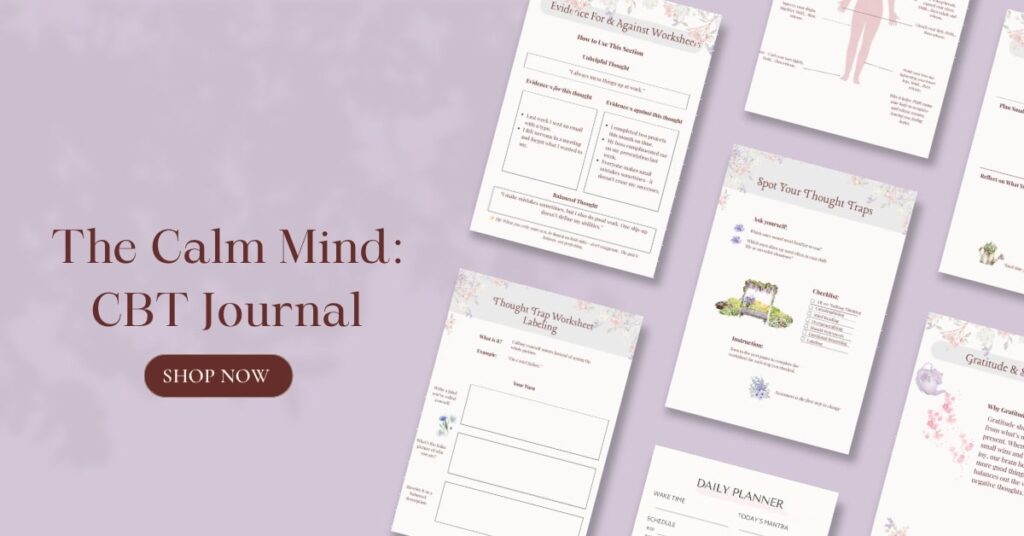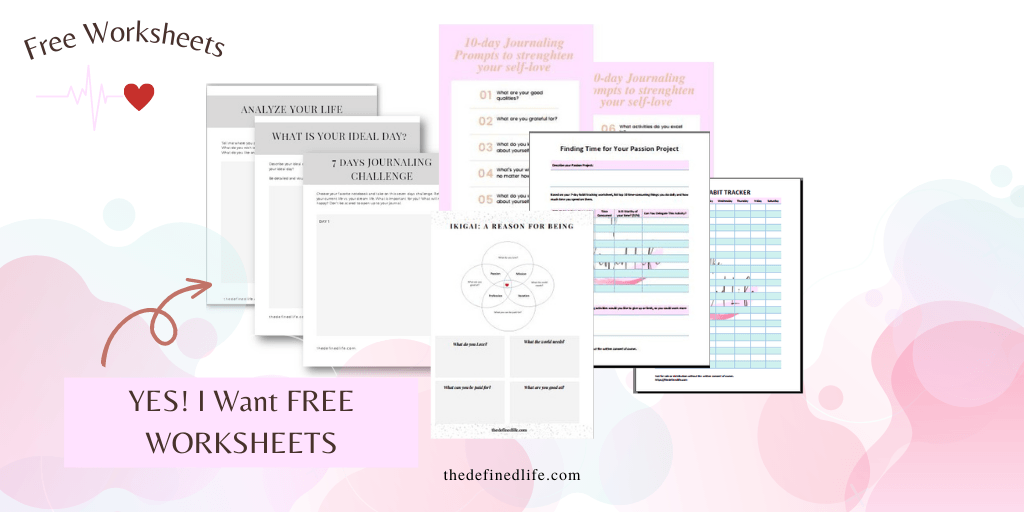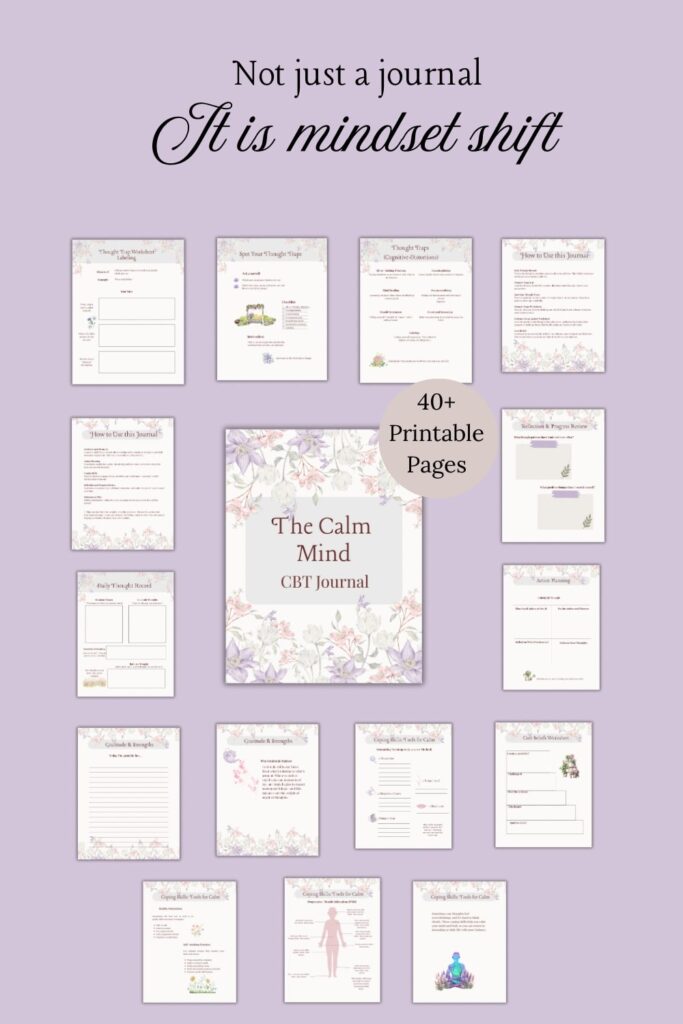
We all have moments when our minds spiral with worry, self-doubt, or guilt. Sometimes, those thoughts start to feel like facts — and that’s where cognitive behavioral therapy journaling becomes a powerful tool.
CBT journaling helps you slow down your thoughts, analyze them, and replace the ones that no longer serve you. It’s a simple but transformative habit that can improve emotional awareness, self-control, and overall mental clarity.
If you’ve ever wanted to understand why your thoughts make you feel a certain way — or how to change them — this practice is for you.
Table of Contents
What Is Cognitive Behavioral Therapy Journaling?
Cognitive Behavioral Therapy (CBT) is a psychological approach that teaches us how our thoughts, emotions, and behaviors are interconnected. When we learn to challenge and reframe negative thinking, we naturally change how we feel and respond.
Cognitive behavioral therapy journaling applies this principle to writing. Instead of letting thoughts run unchecked, you record them, question them, and identify healthier ways to respond.
This process helps you:
- Recognize distorted thought patterns
- Understand emotional triggers
- Develop a more balanced inner dialogue
- Gain a sense of control over your reactions
Check out this post on CBT Journaling
Why You Should Start CBT Journaling
Most of the time, we don’t even realize how our thoughts shape our day.
A small mistake turns into “I always fail.”
A quiet friend becomes “They must be mad at me.”
Cognitive behavioral therapy journaling allows you to catch those thoughts before they spiral. By writing them down, you can separate what’s true from what’s just fear or assumption.
Over time, this helps you respond with reason instead of emotion — and that shift can change everything.
A Peek Inside
The Calm Mind CBT Journal
My printable CBT planner is designed to guide you through the key steps of cognitive behavioral therapy journaling in a structured, supportive way.
Each page helps you identify a thought, analyze it, and replace it with something more balanced. It’s ideal for anyone who wants to break free from overthinking, anxiety, or emotional overwhelm.
Inside, you’ll find:
- Daily thought and feeling trackers
- Cognitive distortions reference page to identify common thinking traps
- Guided reframing templates
- A section for new balanced thoughts
- Progress reflections to track mindset growth
✨ Free Sample Page: Try the “Evidence For or Against” worksheet — a simple yet eye-opening page that helps you see whether your thoughts are based on facts or assumptions. (Subscribed below to have access!)

It’s one of the most effective exercises for grounding yourself when emotions feel intense.
How to Use Cognitive Behavioral Therapy Journaling Daily

You don’t have to write for hours — even 5 to 10 minutes can make a difference.
Here’s a simple rhythm to follow:
- Write down the situation that triggered a strong feeling.
- Record your automatic thought about it.
- Identify the emotion (and rate its intensity).
- Look for evidence for or against your thought.
- Reframe it into a more realistic or compassionate statement.
Over time, this daily practice helps retrain your mind to think clearly, calmly, and truthfully.
Final Thoughts
Cognitive behavioral therapy journaling isn’t just another self-care trend — it’s a proven way to understand yourself better and create lasting emotional change.
If you’re ready to stop letting negative thoughts run your day, start your journaling journey with The Calm Mind CBT Journal. It’s a gentle, structured space to build awareness, balance, and inner peace — one page at a time.
🩵 Get your printable journal here → TDL SHOP
Love and light,








Leave a Reply